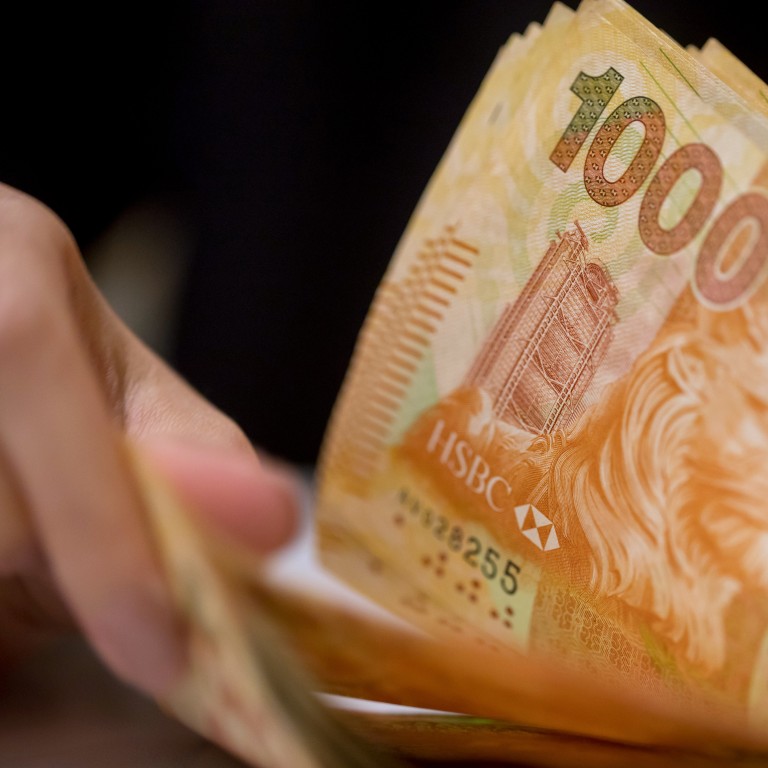
HKMA sells US$3.24 billion to defend Hong Kong currency peg from capital outflow ahead of expected US interest rate rise
- The de facto central bank stepped into the currency market to defend the local dollar against the weakening effects of capital outflow
- Investment banks including Goldman Sachs and JPMorgan see the Fed raising interest rates by 75 basis points on Thursday
The Hong Kong Monetary Authority (HKMA) bought HK$11.78 billion of the city’s currency, and sold US$1.5 billion of US dollars on Wednesday evening to bolster the exchange rate and return the local dollar to its trading band, after it briefly weakened to HK$7.8500 per US dollar.
The band, in place since 2005, allows the Hong Kong dollar to fluctuate between HK$7.7500 and HK$7.8500 against the American currency.
The intervention was the HKMA’s largest in eight such actions this year. The de facto central bank sold a combined US$5.48 billion and bought HK$43.01 billion of currencies this year.
If the predictions of Goldman Sachs and JPMorgan prove correct, it would be the biggest rate rise since 1994.
This is the main culprit behind the Hong Kong dollar’s slump
HKMA chief executive Eddie Yue Wai-man has warned that the cost of borrowing money will continue to rise, which will lead to more capital leaving the city.
“The trend will continue, as we are just at the beginning of the interest rate rise cycle,” Yue said in an interview last week.
The US central bank has flagged 10 increases in interest rates through to the end of 2023, forcing the HKMA to raise its rate in lockstep to maintain the currency peg.
But the market rate in Hong Kong rose at a slower pace than the US, resulting in a wider interest rate gap that has prompted global investors to sell the local currency to invest in higher-yielding assets.
This is known as a carry trade and has drawn capital out of the Hong Kong dollar market, sending the currency to the weak end of the peg and forcing the HKMA to intervene.

The interest rate gap between the US and Hong Kong widened to 96 basis points on Tuesday, compared with just 3 basis points a year ago.
The interventions will reduce the aggregate balance – the sum of balances in clearing accounts maintained by banks with the monetary authority – to HK$294.56 billion on June 17, according to data provided by the HKMA. the figure compares with HK$377.52 billion at the start of 2022.
The capital outflow, and resulting interventions, has already driven borrowing rates up. Hong Kong’s interbank rate, or Hibor, has almost tripled from 0.14 per cent at the beginning of the year to 0.52 per cent on Wednesday.
The three-month Hibor rose to the highest in two years at 1.09 per cent on Tuesday, compared to 0.25 per cent at the start of 2022. The 12-month Hibor reached a three-year-high of 2.85 per cent, compared with 0.43 per cent at the beginning of this year.

